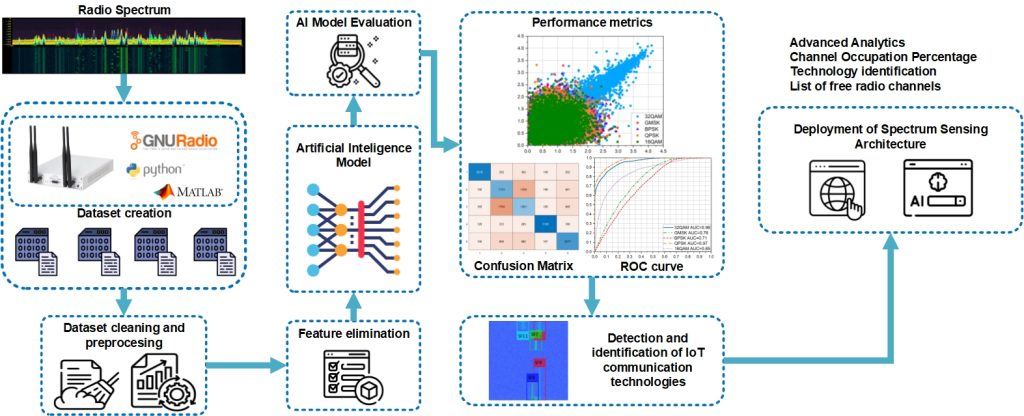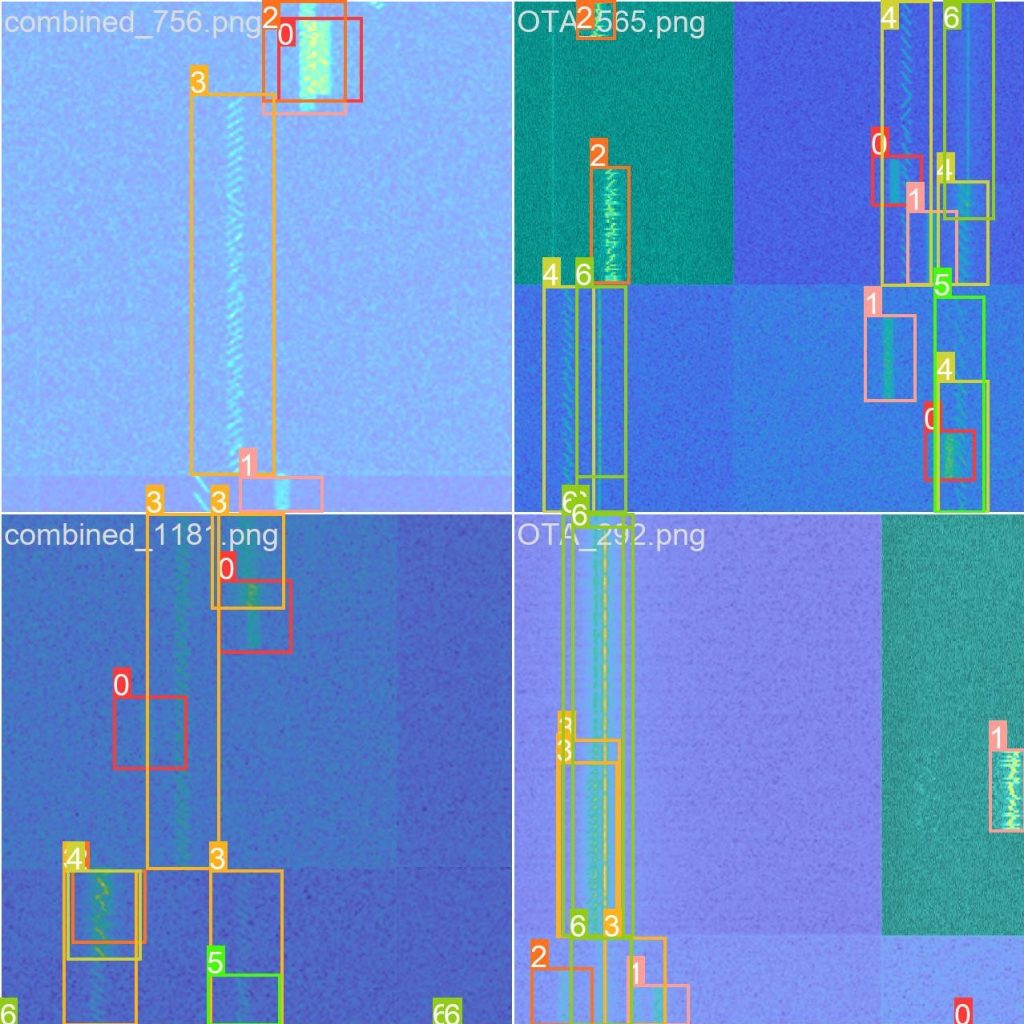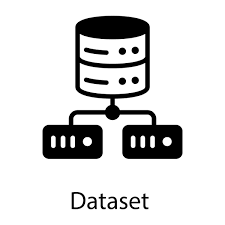IoTSensing Project Results. Publications for 2025 year:
- Mutescu, Partemie-Marian, Alexandru Lavric, Adrian-Ioan Petrariu, Alin-Mihai Cailean, and Valentin Popa. “ Radio Spectrum Sensing Framework for Large-Scale, High-Density IoT Sensor Networks .” IEEE Access (2025).
- Mutescu, Partemie-Marian, Valentin Popa, and Alexandru Lavric. 2025. “ LoRa Communications Spectrum Sensing Based on Artificial Intelligence: IoT Sensing .” Sensors 25, no. 9: 2748.
- Maftei, Alexandru A., Adrian I. Petrariu, Valentin Popa, and Alexandru Lavric. 2025. “ A Blockchain Framework for Scalable, High-Density IoT Networks of the Future .” Sensors 25, no. 9: 2886.
- Mutescu, Partemie-Marian, Valentin Popa, and Alexandru Lavric. “ Dataset Creation Strategies for Future AI-based Radio Spectrum Sensing Applications ,” 2025 International Conference on Control, Automation and Diagnosis (ICCAD), Barcelona, Spain, 2025, pp. 1–6.
- Mutescu, Partemie-Marian, Alexandru Lavric, Adrian-Ioan Petrariu, and Valentin Popa. “ AI-Powered Capabilities for IoT Spectrum Sensing Applications ,” 2025 International Conference on Artificial Intelligence, Computer, Data Sciences and Applications (ACDSA), Antalya, Turkiye, 2025, pp. 1–6.
IoTSensing Project Results. Radio Spectrum Sensing Free Datasets:
SpectrumHive LoRa Dataset
This dataset comprises 156,000 radio signal frames using the CSS LoRa modulation with spreading factors from 7 to 12, with 26,000 signal frames for each LoRa SF.
The LoRa signals are synthetically generated using Bassel Al Homssi library under Matlab environment [1]. Each signal frame consists of 4,096 complex samples, captured at a sampling rate of 1 Msps, with a signal-to-noise ratio (SNR) ranging from -20 dB to 30 dB with an increment of 2 dB. The dataset incorporates Rician fading and clock offsets between -5 and +5 ppm, with each frame having normalized power. The dataset is stored in MAT files, with each file containing two variables:
-IQ samples: Stored as a complex double array.
-Label: Provided in categorical format.
This dataset was used to train and evaluate a CNN for LoRa SF detection, which obtained a live inference detection accuracy of 99.16% using SX1276 LoRa transceivers.
SpectrumHive_IoT_Dataset_IQstream Dataset
This dataset comprises 120,000 radio signal frames spanning 11 modulation classes and noise. The modulation classes included are: QPSK, DBPSK, GFSK, 16QAM, 64QAM, CSS LoRa SF7, CSS LoRa SF8, CSS LoRa SF9, CSS LoRa SF10, CSS LoRa SF11, and CSS LoRa SF12.
Each signal frame consists of 4,096 complex samples, captured at a sampling rate of 1 Msps, with a signal-to-noise ratio (SNR) ranging from -5 dB to 30 dB. The dataset incorporates Rician fading and clock offsets between -5 and +5 ppm, with each frame having normalized power.
The dataset is stored in MAT files, with each file containing two variables:
-IQ samples: Stored as a complex double array.
-Label: Provided in categorical format.
This dataset is well-suited for research and development in wireless signal processing, modulation classification, and deep learning applications.
IoTSensing Project Results. Conference Participations and Publications for 2025 year
- 9th edition in the series of the International Conference on Control, Automation and Diagnosis, Barcelona Spain, Paper title: Dataset Creation Strategies for Future AI-based Radio Spectrum Sensing Applications
- International Conference on Artificial Intelligence, Computer, Data Sciences and Applications (ACDSA), Antalya, Turkey, Paper title: AI-Powered Capabilities for IoT Spectrum Sensing Applications
Events European Researchers’ Night
Scope of the IoTSensing research project
The IoTSensing project entails the design, implementation and testing of spectrum sensing AI algorithms that are able to perform radio spectrum sensing with the main purpose to increase the performance level of large-scale high-density IoT networks. The algorithms will be validated in real operating conditions and will integrate advanced machine learning and deep learning architectures to achieve the highest level of performance. The novel platform will also integrate an interface to visualize and analyze IoT radio spectrum usage, detect interference, and generate detailed reports on radio spectrum occupancy and even radio channel allocation patterns.
”Efficient spectrum sensing is the backbone of modern wireless communication. In a world where connectivity fuels innovation, the ability to intelligently manage and optimize radio frequencies is key to unlocking the full potential of emerging technologies like IoT, 5G, and beyond.”Spectrum Sensing
Radio Spectrum
Spectrum Sensing Intelligence
IoT Devices
Spectrum Sensing Awearness
Objectives
Main objective: Design, implementation and testing of spectrum sensing AI algorithms that are able to perform radio spectrum sensing with the main purpose to increase the performance level of large-scale high-density IoT networks.
- O1: The first objective is to create, develop and record the datasets that will be used for the AI spectrum sensing algorithm training, validation, and testing.
- O2: The second objective is the training and validation of the developed AI algorithms that will be able to classify different IoT technologies (e.g. LoRa, SigFox). This objective also entails the entails the deep learning algorithm design where different configuration and neural networks will be analyzed and evaluated.
- O3: The third objective is to experimentally evaluate, test and optimize the developed AI spectrum sensing algorithms prototypes. These tests will be firstly performed in various laboratory conditions and also in real time operating conditions.
- O4: The fourth objective is to maintain and further develop our young research team, by financially supporting two highly performant Postdocs young researchers and also a PhD student that will add original and high-impact research results to his thesis.
- O5: The fifth objective is to increase the visibility of our research group included in this research proposal and to contribute to the international visibility of University of Suceava and of the Romanian research by publishing high quality and novel research results meanwhile, contributing to the future IoT networks.

Our Mission
Our mission is related to finding solutions to improve IoT network’s scalability by using advanced spectrum sensing algorithms that can enable channel allocation techniques and optimized radio channel allocation and utilization in large scale high density IoT architectures. The design of different spectrum sensing algorithms is currently an open issue, and further improvements are needed.
Artificial Intelligence Spectrum Sensing Algorithms for large scale high-density Internet of Things (IoT) Networks
IoTSensing


